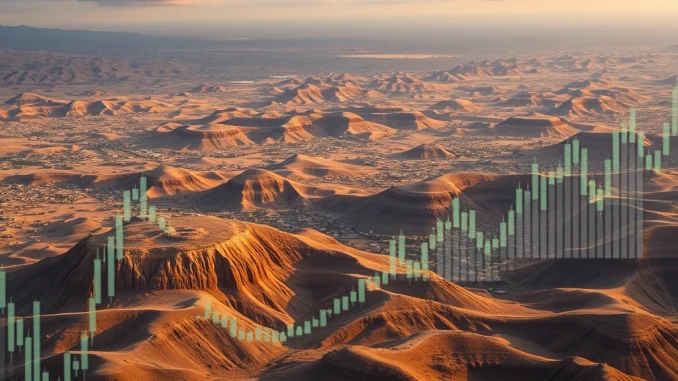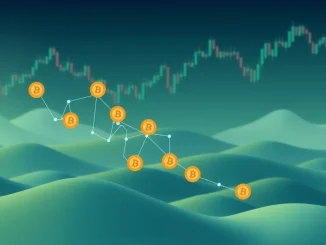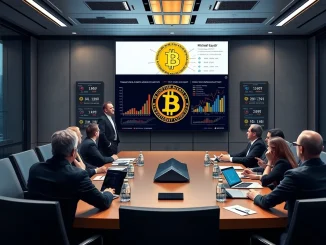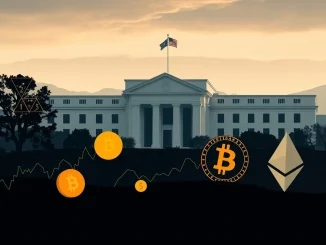
Reports emerging from state media about a final missile launch by Iran before a ceasefire took hold have once again put the spotlight on Geopolitical Risk and its unpredictable influence on global markets, including the Crypto Market. While the immediate military action may have paused, the underlying tensions between Iran and Israel remain a critical factor for investors to monitor.
What Happened: The Reported Final Missile Launch
According to reports citing Iran’s state media outlet, Student News Network (SNN), via Jin10.com, Iran reportedly fired its final missile towards Israel just before a ceasefire was implemented. This specific detail, if confirmed, highlights the intense final moments of a period of heightened military exchange.
Understanding Geopolitical Risk and the Crypto Market Link
Why does news about missile launches and ceasefires in the Middle East matter to someone holding Bitcoin or Ethereum? It boils down to Geopolitical Risk. Major international incidents create uncertainty. Uncertainty often leads investors to re-evaluate their portfolios:
- Risk-Off Sentiment: In times of fear, investors tend to move away from assets perceived as risky (like many cryptocurrencies and stocks) towards perceived safe havens (like gold, or historically, government bonds).
- Market Sentiment Shifts: News headlines directly impact investor psychology, driving fear or confidence.
- Global Interconnectedness: Financial markets are globally linked. Instability in one key region can send ripples worldwide.
How Iran Israel Conflict Shapes Market Sentiment
The ongoing Iran Israel Conflict is a significant source of global instability. Escalation or de-escalation directly impacts Market Sentiment. When tensions rise, we often see:
- Increased volatility across financial markets.
- Potential for panic selling as investors react to fear.
- Speculation on the conflict’s duration and broader consequences.
Conversely, signs of de-escalation or ceasefire, like the one reported, can temporarily ease fears and lead to a rebound in risk assets, although the underlying tension persists.
Bitcoin Price: A Barometer for Global Tensions?
Many analysts watch the Bitcoin Price during periods of geopolitical stress. Bitcoin was initially conceived outside traditional financial systems, leading some to view it as ‘digital gold’ or a potential hedge against geopolitical and economic instability. However, its relatively young age and high volatility mean it doesn’t always act predictably as a safe haven. Sometimes it moves with risk assets, and sometimes against them. Monitoring its reaction to events like the Iran Israel Conflict provides clues about its evolving role in the global financial landscape and current Market Sentiment.
Navigating Volatility: Actionable Insights for Crypto Investors
Given the impact of Geopolitical Risk on the Crypto Market, what can investors do?
Here are a few actionable insights:
- Stay Informed, Not Reactive: Understand the news, but avoid making impulsive trading decisions based solely on headlines.
- Risk Management is Key: Only invest what you can afford to lose. Consider setting stop-loss orders.
- Diversification: Don’t put all your eggs in one basket. Diversifying across different asset classes (including but not limited to crypto) can help mitigate risk.
- Long-Term Perspective: Geopolitical events can cause short-term price swings. A long-term investment strategy often helps ride out volatility.
Understanding the link between global events and market movements is crucial for navigating the often-volatile crypto space.
Summary: Staying Vigilant in an Interconnected World
While the report of a final missile launch before a ceasefire signals a potential pause in direct hostilities, the underlying Geopolitical Risk stemming from the Iran Israel Conflict remains a significant factor influencing global Market Sentiment and the Bitcoin Price. For participants in the Crypto Market, staying informed about such events and maintaining a disciplined, risk-aware approach is paramount in navigating the inherent volatility driven by both market-specific factors and broader global dynamics.



